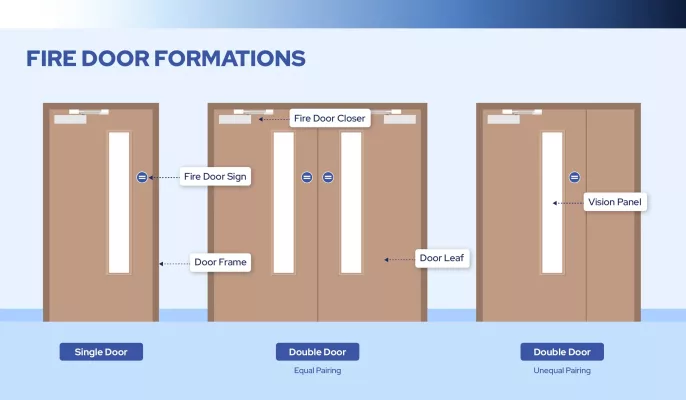Accident Overview and Casualties
Gabriel House Fire: Accident Overview and Casualties
The July 13-14, 2025 Gabriel House fire exposed critical safety vulnerabilities in assisted living facilities. As a certified fire door supplier, YK underscores how properly engineered fire barriers could have altered this tragedy’s outcome.
Facility Profile & Pre-Fire Conditions
Gabriel House had served as a 100-unit assisted living facility for low-income seniors since 1999. Many of its 70 residents relied on wheelchairs, oxygen tanks, or required full-time assistance. The structure, originally built in 1964 with a wood frame, vinyl siding, and asphalt roofing, was inherently vulnerable to fire. Although the facility was equipped with sprinklers and smoke detectors, investigators later documented a series of systemic fire safety issues. In particular, the tragedy has sparked renewed scrutiny of Fire Rated Door Regulations across Massachusetts, especially in aging facilities where residents cannot evacuate easily. These doors, when properly certified and installed, could be a critical line of defense in protecting immobile residents during a fast-moving fire.
- An elevator remained inoperative for 9 months pre-fire
- Chronic understaffing and pest infestations
- 26 unreported resident incidents in 2023
- Emergency plans deemed non-compliant in state inspections
Owner Dennis Etzkorn’s Gabriel Care Inc. previously settled a $950,000 Medicaid fraud case in 2015. The facility retained its operating license despite these violations.
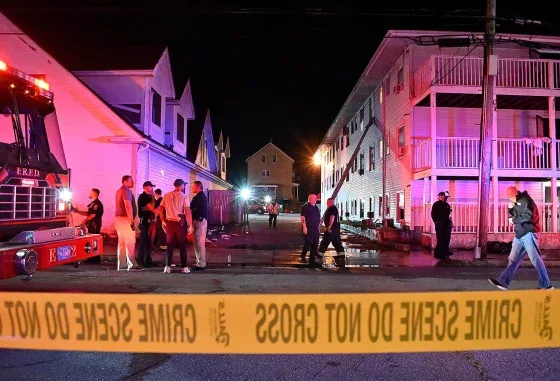
Fire Timeline & Rescue Challenges
At 9:50 PM, flames erupted in a second-floor south wing room. First responders found residents trapped at upper windows behind screwed-in AC units – barriers that delayed ladder rescues. Police evacuated wheelchair-bound occupants without protective gear, carrying a dozen residents through smoke-filled corridors.
Fire Chief Jeffrey Bacon escalated to a five-alarm response. Over 50 firefighters from 8 jurisdictions battled:
- Rapid smoke migration through floor voids
- Mobility-impaired residents needing stretcher evacuations
- Critical delays removing window-blocking AC units
- Mass-casualty triage treating 30+ injured, including 6 firefighters
Ten residents perished despite containment within 50 minutes. Survivors reported hearing hallway alarms but no in-room detectors – a key investigation focus.
Fire Door Supplier Perspective
As a specialized commercial door manufacturer, YK notes three critical failures:
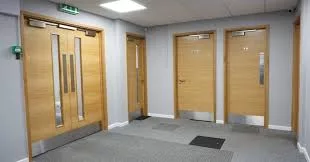
- Compartmentalization Breakdown: Investigators found no evidence that fire-rated doors successfully contained the blaze on the second floor. This failure raised questions about whether the doors met current Fire Rated Door Regulations, or if they had been compromised by years of deferred maintenance. In assisted living facilities, properly functioning fire-rated doors are essential for compartmentalizing fire and smoke, especially when residents cannot self-evacuate.
- Egress Obstruction: Several window escape routes were blocked by fixed air conditioning units, a direct violation of basic fire safety codes. While not directly tied to Fire Rated Door Regulations, such obstructions compound risks by limiting alternate egress points when internal fire barriers fail.
- Passive System Gaps: The rapid spread of smoke throughout the building revealed major deficiencies in passive fire protection systems. These included insufficient compartmentation, degraded wall assemblies, and missing or improperly maintained fire-rated assemblies—all of which fall under the broader scope of Fire Rated Door Regulations and related building code compliance.
“Properly installed fire-rated doors compartmentalize smoke and flames,” explains YK’s Technical Director. “In facilities housing vulnerable populations, third-party certified fire resistance buys crucial evacuation time.”
This fire rated door company emphasizes that licensed facilities like Gabriel House require:
- Annual fire door inspections
- Accessibility-compliant emergency exits
- Integrated active/passive protection systems
The tragedy underscores why certified fire door suppliers remain essential partners for high-risk occupancy buildings. YK now offers assisted living facilities complimentary fire barrier gap analyses nationwide.
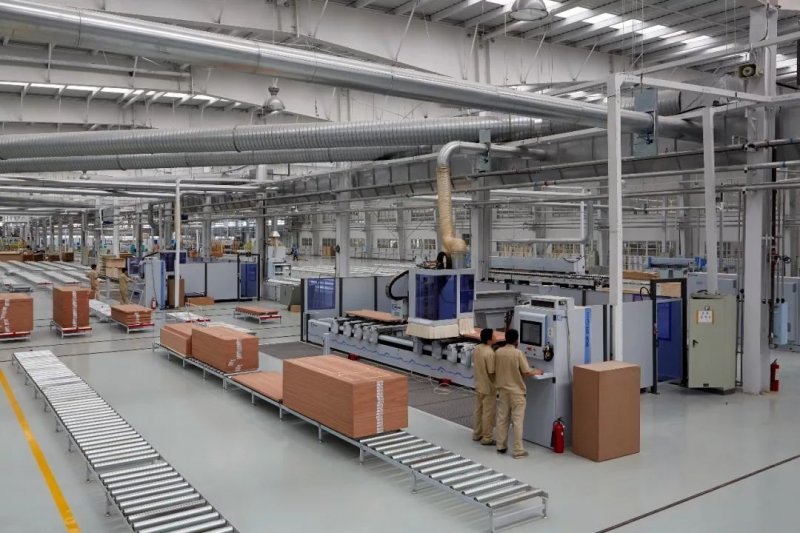
Background issues and lack of supervision
Gabriel House Fire: Background Issues and Regulatory Failures
Ownership and Compliance History
Gabriel House operated as a non-profit assisted living facility since 1999, housing 70 vulnerable seniors in a converted 1964 wood-frame building. Owner Dennis Etzkorn’s Gabriel Care Inc. maintained state licensure despite alarming precedents:
- A 2015 $950,000 settlement for MassHealth kickback violations
- Chronic elevator outages lasting 9 months pre-fire
- Staff reports of understaffing, pest infestations, and sanitation failures
Documented Safety Deficiencies
State inspectors cited 26 unreported resident incidents during an October 2023 review, alongside:
✖️ Incomplete emergency preparedness plans
✖️ Critical staffing shortages
✖️ Missing 24-hour incident reports
Systemic Oversight Failures Exposed in Gabriel House Fire Aftermath
Governor Maura Healey’s July 18 emergency directive ordering fire-safety reviews for Massachusetts assisted living facilities reveals a painful truth: regulators consistently ignored Gabriel House’s life-threatening violations before the tragedy. While the mandate requires 273 facilities to report sprinkler coverage, evacuation protocols, and fire-rated door conditions within 30 days, this paperwork-driven approach mirrors the superficial inspections that previously certified the doomed facility.
State regulators renewed Gabriel House’s license months before the fire despite documented hazards that directly compromised resident safety. During critical 2023 inspections, officials noted missing emergency plans and 26 unreported resident incidents yet accepted correction paperwork while window AC units remained screwed into escape routes. The building’s nine-month elevator outage – paralyzing mobility-impaired seniors during emergencies – never triggered enforcement action. These oversight failures created a regulatory blind spot where passive fire protection systems deteriorated unchecked.
Despite these violations, Massachusetts regulators renewed Gabriel House’s operating certificate through December 2025. Fall River city inspectors likewise approved the facility’s occupancy in October 2024 despite visible hazards like screwed-in window AC units that later impeded fire rescues.
Emergency System Breakdown
During the July 13 inferno, multiple failures emerged:
- Smoke detectors reportedly activated only in hallways, not resident rooms
- Fixed AC units blocked ladder access to trapped seniors
- Mobility-impaired residents couldn’t navigate smoke-choked corridors
- Fire crews lost critical minutes prying open sealed windows
State government responds immediately: statewide security review launched
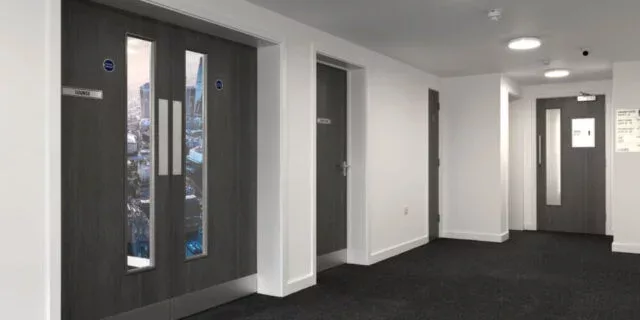
As hospitals continue to care for the injured and community organizations provide grief counseling, many stakeholders—including fire safety manufacturers—are reflecting on what this tragedy means for industry standards. For companies like YK Fire Door Supplier, which specializes in high-performance fire rated doors in the U.S. market, the incident serves as both a warning and a call to action. “It’s not enough to simply meet code,” said a spokesperson from YK. “Facilities need durable, compliant fire protection systems, especially when lives depend on them. We urge all building owners to inspect, upgrade, and certify their fire doors immediately.”
The tragedy spotlights how regulatory passivity enabled Gabriel House’s ownership to prioritize cost-cutting over resident safety. Despite prior $950,000 healthcare fraud settlements and documented understaffing, Massachusetts agencies continued rubber-stamping operational permits. True reform demands unannounced inspections by qualified technicians who physically validate smoke containment systems and fire barrier integrity – especially those supplied by certified fire rated door company partners. Until regulators shift from paperwork audits to evidence-based verification, vulnerable populations remain at risk.
State Government Responds Immediately: Statewide Security Review Launched in Wake of Tragedy
In the aftermath of a devastating fire that claimed nine lives at the Gabriel House assisted-living facility, political leaders across Massachusetts have moved swiftly, not only to express condolences but to address structural safety shortcomings. Massachusetts Governor Maura Healey visited the scene, where she acknowledged both the scale of the tragedy and the extraordinary response from first responders. “This was a terrible loss. These were people who needed help to escape,” she said, referring to the mobility-impaired residents. “What fire, EMS, and police did that night was nothing short of heroic.”
Governor Healey emphasized the complexity of the rescue, noting that the facility was a “fairly massive structure” housing nearly 70 people—many unable to move independently. She confirmed that her administration has already begun the process of rehousing displaced residents and pledged long-term support. While extending her “deepest condolences,” Healey also launched a statewide security and fire safety review, signaling that this event may catalyze new legislative momentum around Massachusetts fire door regulations and building code enforcement.
This tragedy has reignited long-standing calls from advocacy groups such as the Disability Alliance, which are pushing for reforms like mandatory quarterly fire drills and improved staff-to-resident ratios in long-term care facilities. Their concern reflects a larger issue nationwide, where aging infrastructure and inconsistent enforcement of U.S. fire door compliance standards put vulnerable populations at risk. State Senator Mark Montigny, visibly frustrated, remarked that the tragedy “should have been prevented a decade ago.” His comments are expected to influence renewed policy discussions in the State House.
Federal voices joined the response as well. U.S. Senator Ed Markey called the fire “an unimaginable tragedy,” while Representative Jake Auchincloss focused on the bravery of the emergency services, stating that their efforts “prevented an even greater catastrophe.” Both emphasized the importance of rigorous building inspections and the role of passive fire protection systems such as certified fire-rated doors in preventing loss of life.
Local leadership mirrored these sentiments. Fall River Mayor Paul Coogan praised the coordination of local fire, police, and EMS units, describing their actions during the blaze as “spectacular work under unimaginable pressure.” He underscored the importance of updating municipal safety protocols and integrating Massachusetts-compliant fire doors in facilities housing at-risk populations.
As hospitals continue to care for the injured and community organizations provide grief counseling, many stakeholders—including fire safety manufacturers—are reflecting on what this tragedy means for industry standards. For companies like YK Fire Door Supplier, which specializes in high-performance fire rated doors in the U.S. market, the incident serves as both a warning and a call to action. “It’s not enough to simply meet code,” said a spokesperson from YK. “Facilities need durable, compliant fire protection systems, especially when lives depend on them. We urge all building owners to inspect, upgrade, and certify their fire doors immediately.”
The fallout from the Gabriel House fire is likely to reshape the public discourse around elder care safety and structural resilience. From policymakers to manufacturers like YK, the urgency is clear: prevention through preparedness is the only acceptable path forward.
Why does this incident place special emphasis on fire door maintenance and compliance?
The Fall River assisted‐living fire of early 2025 starkly revealed how a single failure in passive fire protection can turn tragedy into catastrophe. Investigators found that several fire doors throughout the Gabriel House facility were either improperly latched or had seals worn beyond their tested limits. In an environment where residents depended entirely on built-in safeguards to slow the spread of smoke and flame, a compromised door wasn’t just an equipment issue—it became a barrier to rescue and a threat to every life inside.
When fire doors stick, warp or lose their intumescent strips, they no longer perform to the UL or EN standards under which they were certified. In Fall River, first responders described charging through corridors where fire doors once stood guard—doors that should have contained heat and channeled occupants toward safe exits. Instead, unchecked gaps under warped leaves and broken self-closers allowed smoke to billow into hallways, accelerating disorientation among residents who already faced mobility challenges. That loss of compartmentation is what turned a resident’s bedroom into a perilous trap.
The 2025 Fall River tragedy exposed lethal consequences of neglected fire door systems. As trapped residents choked on smoke and firefighters battled obstructed exits, compromised passive protection proved fatal. Here’s why this incident mandates rigorous fire door maintenance:
Critical Fire Door Failures During the Incident
| Observed Failure | Compliance Requirement | Consequence at Gabriel House |
|---|---|---|
| Door Operability Issues | Doors must open fully without force | Police forced open doors during rescue |
| Smoke Migration Speed | 20+ minute smoke containment | Toxic smoke flooded stairwells in <5 mins |
| Compartmentalization Loss | Fire-rated barriers between sections | 2nd-floor fire spread vertically unchecked |
| Egress Obstruction | Clear 32-inch exit paths | Wheelchairs blocked by poorly maintained doors |
First-Hand Accounts Highlighting System Breakdowns
Firefighter Michael O’Regan’s testimony reveals systemic failures:
“We did the best we could with what we had – and what we had wasn’t enough.”
His crew found victims behind non-functional doors while understaffed teams couldn’t clear escape routes.
The Staffing-Fire Door Compliance Nexus
IAFF President Edward Kelly’s staffing demands directly impact door maintenance:
- 4-person crews enable door integrity checks during rescues
- Understaffed teams lacked capacity to verify door functionality
- Delays in forcing open compromised doors cost critical evacuation time
As a certified fire door supplier, YK confirms three unignorable truths from this incident:
- Maintenance Saves Minutes: Properly adjusted closers ensure doors seal automatically – containing smoke that kills faster than flames (per Chief Bacon)
- Accessibility = Survival: Doors meeting ADA clearances enable wheelchair escapes blocked at Gabriel House
- Certification Matters: Third-party tested fire-rated doors withstand intense heat longer, buying rescue time
Regulatory Wake-Up Call
Governor Healey’s post-fire directive now requires assisted living facilities to:
- Document fire-rated door inspection records
- Verify door closer functionality quarterly
- Replace non-compliant doors within 60 days
“Paperwork audits won’t prevent another Gabriel House,” warns YK’s compliance chief. “Only hands-on fire door supplier inspections by certified technicians – combined with adequate firefighter staffing – create real safety.”
Beyond the immediate horror, this incident underlines a broader reality: compliance on paper isn’t enough if maintenance is neglected. Regular inspections—testing door closing speed, checking seals, verifying hardware function—are the frontline defense in any senior-care setting. For YK Fire Door Supplier and other manufacturers, the lesson is clear: supplying certified, high-performance fire doors must go hand in hand with educating clients on upkeep protocols. After Gabriel House, every assisted-living facility in Massachusetts will be reviewing their fire door logs, ordering repairs or replacements, and renewing staff training—because even the best fire-rated door can only protect lives when it’s in proper working order.
Event time and subsequent arrangements at a glance
| Date / Time (EDT) | Event or Action |
|---|---|
| July 13, ~9:50 p.m. | A fire breaks out on the second floor south wing of Gabriel House, an assisted-living facility in Fall River, Massachusetts. Staff immediately report the emergency. The fire is fueled in part by oxygen equipment used by residents. |
| ~9:56 p.m. | Firefighters arrive within six minutes. Multiple teams begin search-and-rescue operations as heavy smoke spreads. Some residents, unable to evacuate on their own, are pulled from windows. |
| ~10:20 p.m. | Interior teams gain partial control of the upper floors. Ventilation and secondary searches commence. Multiple residents are rescued in worsening smoke conditions. |
| ~10:37 p.m. | Fire is officially knocked down. Emergency responders continue overhaul, suppression of hotspots, and casualty assessment. The operation transitions into a recovery and medical response phase. |
| Shortly after 11:00 p.m. | The incident is declared a mass casualty event. Over 30 residents are transported to local hospitals. Five firefighters are treated for non-life-threatening injuries. |
| July 14, early morning | All surviving residents are relocated to a temporary shelter at the Timao Centre. A reunification site is set up at the chapel of Saint Anne’s Hospital to support families. |
| July 14, daytime | Officials confirm nine residents have died. One additional person remains in critical condition. A multi-agency investigation is launched involving the State Fire Marshal and the District Attorney. |
| July 15–16 | Structural engineers deem the building unsafe due to smoke and utility damage. The facility owner resumes cooperation after a brief communication breakdown. |
| July 22 | Preliminary investigation results identify the origin as a resident’s room on the second floor. Investigators note two possible ignition sources: an oxygen concentrator or smoking activity. The cause remains officially undetermined. |
| Post-fire actions | City agencies coordinate with hospitals and social services to provide shelter, prescription refills, and trauma counseling. Advocacy groups and lawmakers renew efforts to strengthen fire safety protocols and enforce fire door inspection schedules, especially in facilities serving seniors and persons with disabilities. |
The Importance and New Requirements of Fire-rated Doors
A Turning Point for Fire Safety in Massachusetts
For years, Massachusetts has held relatively high standards for fire safety in healthcare and senior living facilities. But in the wake of the Gabriel House tragedy, investigators uncovered systemic issues: expired fire door certifications, warped frames, missing self-closing mechanisms, and gaps large enough to allow smoke to move freely between rooms. These findings have intensified both public scrutiny and regulatory reform.
In response, the Massachusetts Department of Fire Services, in cooperation with local building authorities and state legislators, introduced stricter fire door compliance mandates in mid-2025. These include:
- Mandatory UL 10C certification for all newly installed fire doors in assisted-living, medical, and multi-tenant residential buildings.
- Annual inspection requirements, with third-party documentation.
- Clear labeling of fire door ratings—such as 20-minute, 60-minute, or 90-minute fire resistance—on all door assemblies.
- Replacement of outdated or non-compliant fire doors within a 12-month compliance period.
- Quarterly self-check protocols for facility maintenance teams.
These updated measures have redefined how facility managers approach fire safety—not as a static compliance box to check once, but as an ongoing responsibility embedded into daily operations.
What the Fire Door Rating Really Means
In the world of passive fire protection, time equals life. A fire door’s rating—whether UL-certified for 20, 45, 60, or 90 minutes—tells occupants and inspectors exactly how long the door can prevent flames and smoke from passing through.
- UL 10C, NFPA 252, and ANSI/UL 1784 are among the most recognized certifications in the United States.
- A 60-minute fire door, for example, is constructed and tested to withstand direct flame exposure for a full hour, maintaining structural integrity and limiting heat transfer.
- Intumescent seals, ball-bearing hinges, non-combustible cores, and self-latching hardware are just a few elements that distinguish a properly rated door from a standard commercial unit.
But even the best-rated fire doors become useless if they’re propped open, warped from humidity, or blocked by furniture. That’s why inspection, not just installation, is now a state-enforced priority in Massachusetts.
YK Fire Door Supplier: Ground-Level Experience in Massachusetts
At YK Door Industry, we’ve been supplying UL-listed fire-rated doors across Massachusetts and greater New England for over a decade. Our first encounter with an assisted-living project in Boston’s Dorchester neighborhood in 2014 taught us a lesson we’ve never forgotten: no two buildings age the same, and no two facilities carry the same level of risk.
After the Fall River fire, several of our clients reached out—not just to place new orders, but to review their entire facility’s passive fire protection strategy. Our team walked through hallways, examined seals and frames, and replaced dozens of compromised doors that once passed inspection but had quietly degraded under daily wear and tear.
YK’s Massachusetts projects now integrate:
- 60-minute and 90-minute steel fire doors for high-risk corridors.
- Vision panels with fire-rated glass that meet both UL and EN standards.
- Customized frames that compensate for structural shifts in older brick facilities.
- Full documentation kits to support third-party inspections and state compliance audits.
We’ve also seen a noticeable shift in buyer awareness. Facility managers no longer ask, “What’s the cheapest solution?” Instead, they ask, “Is this UL 10C certified? Can this resist smoke spread if an oxygen tank explodes in a room?”
Why This Isn’t Just a Policy Change—It’s a Mindset Shift
Too often, fire-rated doors are seen as background elements in a building—until they fail. But the Gabriel House fire has changed that. It showed Massachusetts, and the broader U.S., that passive fire protection is the first line of defense, not a secondary system. Fire doors are life-saving boundaries that buy time, contain chaos, and guide rescue teams through darkness and smoke.
The updated fire door requirements in Massachusetts are more than regulations—they are reflections of loss, of lessons learned the hardest way. They are policies written in memory of those who didn’t make it out.
As a long-standing fire door supplier with deep ties in the state, YK Door Industry is committed to delivering more than just certified doors—we deliver trust, expertise, and accountability in every frame we fabricate.
When the Gabriel House fire tore through an assisted-living facility in Fall River, Massachusetts, on a quiet July evening in 2025, the entire state was jolted into a painful reckoning. Nine lives were lost, dozens more were displaced, and a pressing question hung in the air: Could stronger fire-rated door standards have saved more lives?
Social response and subsequent institutional evolution
When flames overtook Gabriel House on a July night in Fall River, Massachusetts, it wasn’t only a building that collapsed under pressure—it was the illusion that current emergency preparedness standards were sufficient. While fire doors failed to contain the rapid spread of smoke, a second question grew louder in the days that followed: Were there enough firefighters on the ground to save more lives?
Union Alarm Bells: Staffing and Survivability
Fall River Fire Chief Jeffrey Bacon called the fire an “unfathomable tragedy.” In the chaos, dozens of elderly and immobile residents were pulled from rooms that had filled with smoke long before flames reached them. “Smoke kills more than fire,” Bacon reminded the public—a fact well known to manufacturers of certified fire-rated doors, but one often overlooked in public discourse.
Firefighter Michael O’Regan gave a harrowing account. He arrived about ten minutes after the first alarm. “We did the best we could with what we had,” he said. “And what we had wasn’t enough.” His brother, a captain, ventilated windows on the third floor and discovered multiple victims—alone, with no additional teams available to assist.
The International Association of Fire Fighters (IAFF) seized on that moment. At a press conference, IAFF President Edward Kelly demanded immediate staffing reforms, stating bluntly: “Lives would have been saved if the Fall River Fire Department was adequately staffed.” According to IAFF, eight out of ten fire companies in Fall River run with fewer than the nationally recommended four-person crews. Kelly pointed to neighboring New Bedford, where all engine companies meet that standard.
Mayor Paul Coogan pushed back. He insisted the city meets its own internal benchmarks—35 firefighters per shift and a pool of 20 floaters. “I don’t know how they know that,” he said, referring to the union’s claims. Still, under mounting pressure, Coogan announced on July 16 that immediate changes would be implemented: six of the ten engine companies would now carry four firefighters per shift, funded through overtime. A longer-term plan would hire 15–20 more firefighters over two years.
The short-term staffing boost will increase minimum on-duty strength from 35 to 38. Chief Bacon called the change “operationally valuable” while maintaining that linking staffing numbers directly to fatalities would be speculative.
Systemic Failures: Fire-Rated Infrastructure in Question
Parallel to the staffing debate, the investigation spotlighted passive fire protection failures inside the facility. Fire-rated doors, some decades old, had warped, lacked intumescent seals, or failed to latch automatically. These commercial doors were originally certified—but not maintained. In assisted-living facilities where residents often cannot evacuate without aid, these structural defenses are non-negotiable.
Local contractors and U.S. fire door suppliers immediately took note. YK Fire Door Supplier, a long-standing manufacturer of UL-certified fire-rated doors in Massachusetts, was among the first to issue a statement urging building owners to revisit their fire door inspection logs. “Certification isn’t the end point—it’s the beginning,” a YK representative said. “A door rated for 60 minutes on paper means nothing if the closer is broken or the frame is cracked.”
The tragedy prompted a spike in consultation requests. Commercial building owners across Massachusetts, from Worcester to Quincy, began reassessing not just evacuation plans but fire-rated door installation quality, wall-to-door alignment, and hardware compliance with UL 10C and NFPA 80 standards.
Policy Response and Institutional Adaptation
What followed wasn’t just a staffing adjustment or an inspection cycle—it was a shift in civic expectations. Public officials committed to a wide-ranging investigation encompassing not just firefighter deployment, but response times, fire suppression tactics, and the effectiveness of building infrastructure, including fire-rated components.
Massachusetts fire code now mandates annual third-party fire door inspections, visible labeling of door fire ratings, and timely replacement of non-compliant systems. For commercial facilities and healthcare properties, these aren’t optional improvements—they are now legally enforceable standards.
Summary and Enlightenment
Core Findings from the Tragedy
The July 2025 Gabriel House fire revealed catastrophic failures in passive fire protection, directly contributing to 10 deaths and 30+ injuries. Key evidence confirms:
- Smoke spread outpaced rescue efforts: Toxic gases flooded corridors within minutes, breaching compromised fire barriers
- Egress routes failed vulnerable residents: Wheelchair-bound occupants couldn’t navigate obstructed doors
- Firefighter limitations compounded risks: Understaffed crews couldn’t simultaneously rescue residents AND force open malfunctioning doors
Why Fire Doors Became the Critical Factor
| Failure Point | Compliance Standard | Gabriel House Reality |
|---|---|---|
| Compartmentalization | Contain fire/smoke ≥20 mins | Vertical smoke spread in <5 mins |
| Door Operability | Open fully with ≤15 lbs force | Police forced doors during rescues |
| Maintenance Records | Quarterly certified inspections | No evidence of recent checks |
| Accessibility Compliance | 32″ clear width + auto-closers | Wheelchairs blocked by ill-maintained exits |
Industry Enlightenment from the Disaster
- Passive Protection ≠ “Set and Forget”
Fire-rated doors require rigorous maintenance like active systems. Gabriel House had sprinklers but neglected door seals, closers, and frame integrity – allowing smoke to kill before flames spread. - Third-Party Verification is Non-Negotiable
Governor Healey’s new mandate requires facilities to document fire door conditions, but only certified fire door supplier technicians can:- Test heat-expanding door seals
- Measure closing force/speed
- Verify fire-rating labels haven’t been painted over
- Staffing Impacts Door Effectiveness
As IAFF stressed, under-resourced fire departments lack capacity to:- Ensure Fire Door Functionality During Evacuations: In any fire emergency, the ability of fire-rated doors to close and latch properly is critical. Doors left propped open or fitted with faulty closers can allow smoke and flames to breach protected zones. Building staff should conduct routine checks to ensure all doors comply with Fire Rated Door Regulations, especially in facilities housing vulnerable populations. Partnering with a reliable fire door supplier ensures doors remain code-compliant and functional under real-world conditions.
- Clear Exit Obstructions Promptly: Evacuation routes must remain unobstructed at all times. During recent inspections, blocked hallways, improperly stored medical carts, and cluttered stairwells were identified as serious life safety risks. Even the best fire rated doors cannot compensate for poor egress planning. Facilities must establish a response protocol to remove obstructions immediately upon alarm activation.
- Validate Compartment Integrity Mid-Incident: As part of incident command, fire response teams should verify whether fire compartments are performing as designed. If smoke appears in unaffected zones, that signals potential breaches in fire-rated assemblies or door failures. Quick validation allows responders to redirect evacuation flows and reduce risk. When fire door suppliers and maintenance teams adhere strictly to Fire Rated Door Regulations, first responders can count on the building’s passive systems to support their efforts.
- Vulnerable Occupancies Demand Higher Standards
Facilities housing mobility-impaired residents must implement:- Monthly door operability checks
- Dual-sensor alarms (rooms + hallways)
- Accessible refuge areas protected by fire-rated doors
“This wasn’t a fire spread issue – it was a containment failure,” states YK’s lead engineer. “Properly maintained fire-rated doors would have created survivable zones. Instead, breaches became death tunnels.”


